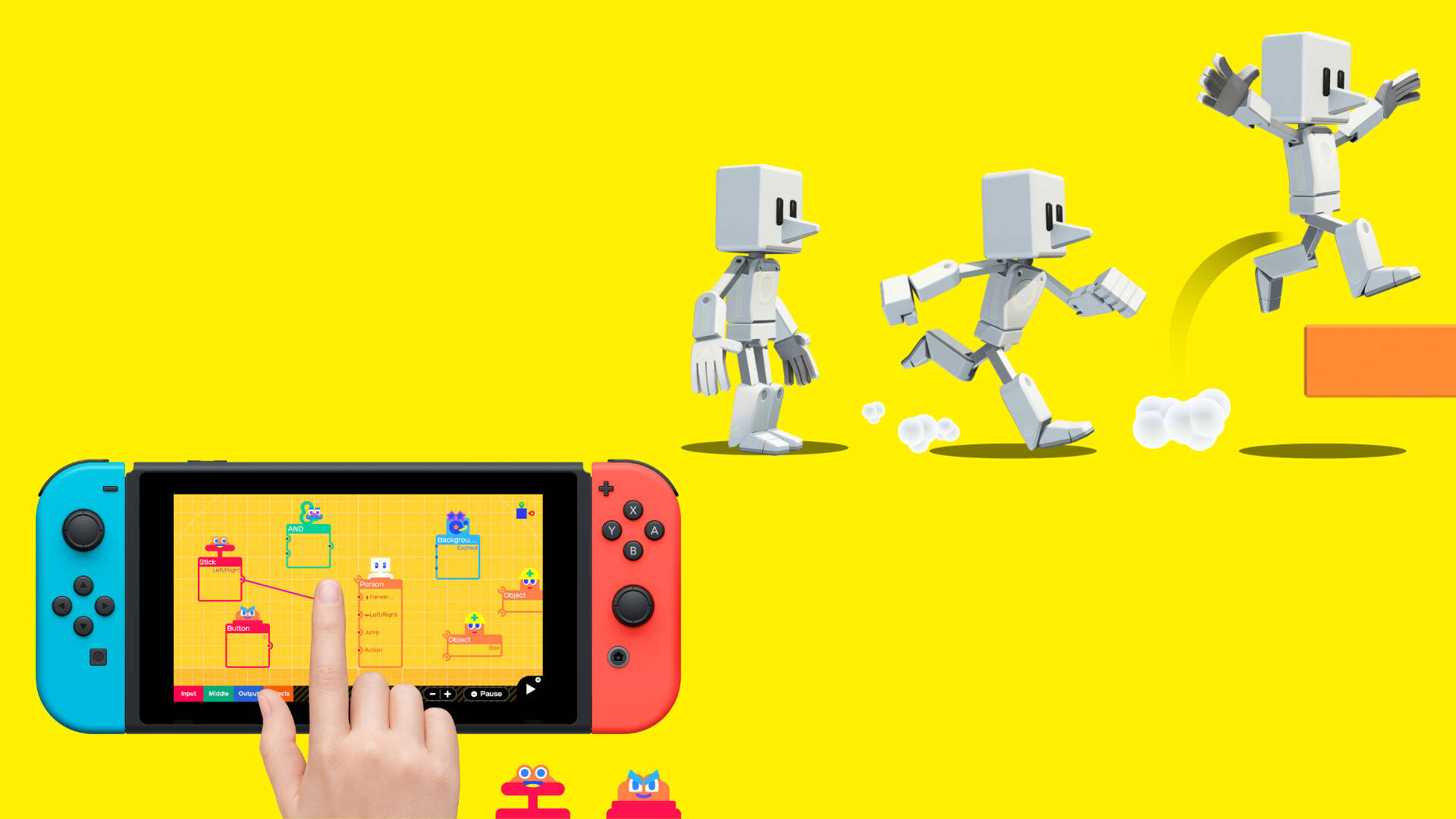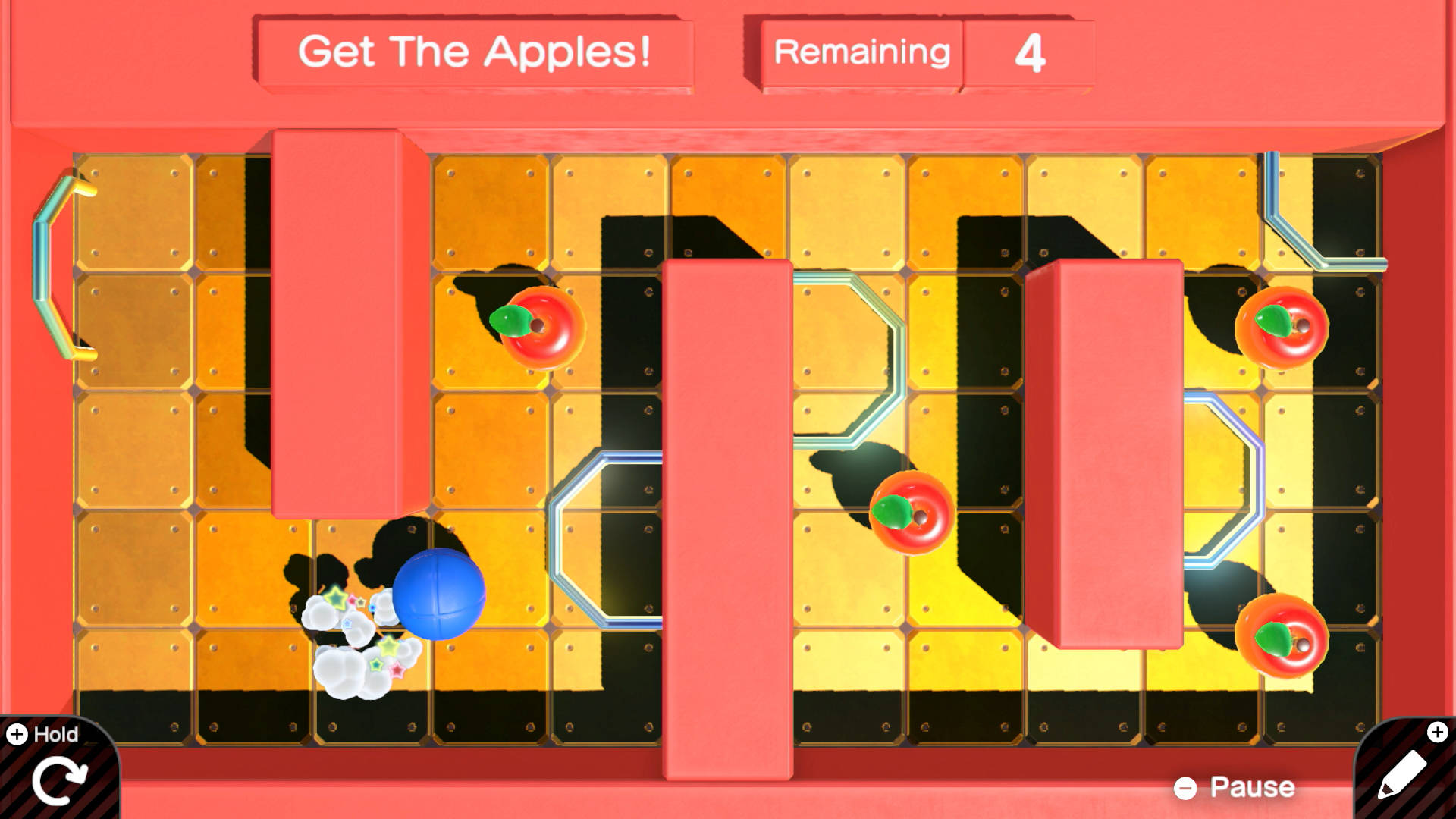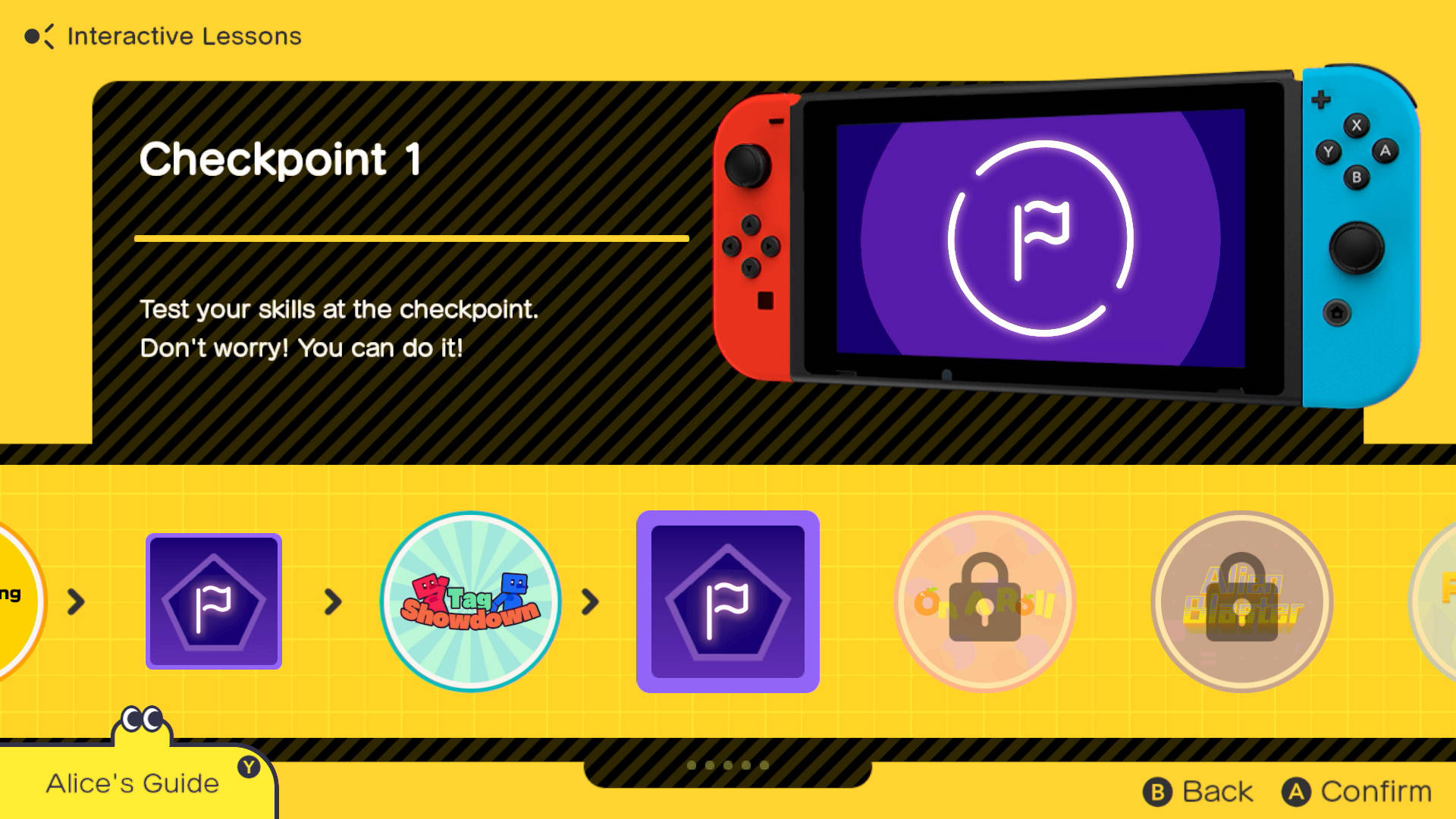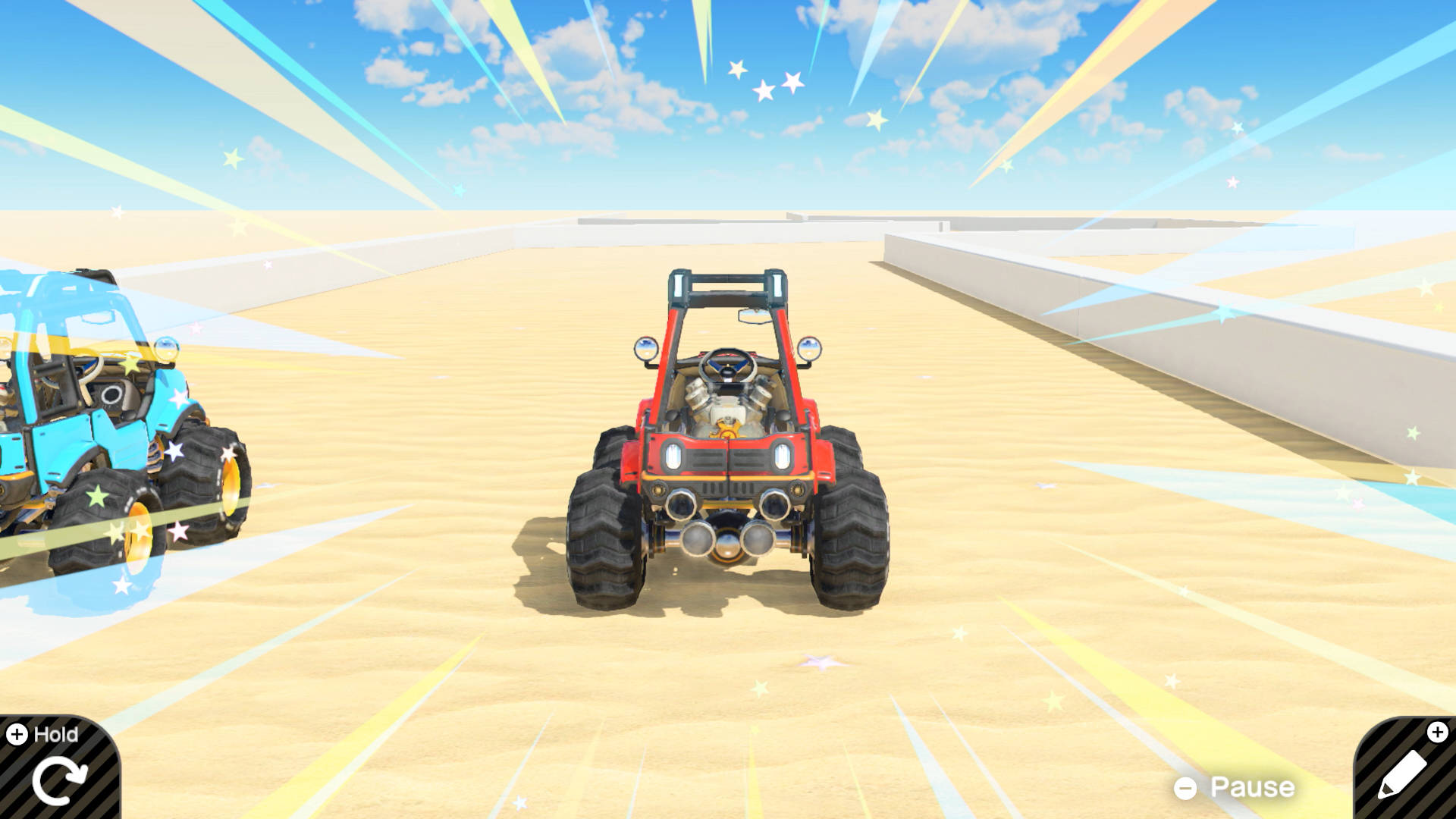Game Builder Garage Impressions
Game Builder Garage is the kind of release that you think you want to review, but you probably don’twant to review.
How do you review a game that’s about making games? I mean, there are of course the core elements you can talk about, such as the overall tools provided, the user interface, the limitations on objects or functions, those sorts of things. But can one truly pass judgement on such a piece of software before fully utilizing it to make their own “complete” game? And, if that is a requirement, it’s easy to forget just how hard building a game—especially from scratch—really is. I remember running into many of these concerns when reviewing RPG Maker Fes, but that was a toolset focused on one specific genre, which was more about putting all of the pieces together and crafting a storyline, and less about needing to know how things worked underneath the hood.
As of this moment, I’m a long way away from having anything I would consider to be a completed game in Game Builder Garage. In fact, I’m not even finished with the included tutorials.
As a way to help players down the path of game creation, Game Builder Garage tasks you with fully creating seven different smaller-sized projects planned out by the team at Nintendo. This starts with Tag Showdown, where two players run around a single-screen environment, one the chaser and the other the chased. Given you’ll have zero knowledge of how to do much of anything going into Tag Showdown, a friendly cursor named Bob takes you step-by-step through the process of making the game. That can mean placing a character into the world and setting up their controls, crafting platforms and walls of various sizes and colors, or simply determining what the screen shows at any given moment.
Once you finish the seven steps of Tag Showdown’s interactive lesson, you end up with a simple, but fully playable, game. A second cursor, Alice, then steps in to make sure you’ve actually learned what you’re supposed to have, asking you to pass a few tests before moving on to building the next project. Each successive game you put together focuses on teaching you specific elements. On a Roll, for example, includes how to make top-down games that also utilize gyro controls; Alien Blaster, meanwhile, teaches you how to set up auto-scrolling screens, how gravity can affect objects, and more.
The problem with Game Builder Garage’s interactive lessons is that they remind me of being back in school, constantly teetering back and forth between excitement and tedium. In one moment, I’m feeling the thrill of learning something new that greatly expands my understanding and capabilities. In another, I’m having to repeat basic steps again and again, when all I really want is to get to the fun stuff.
The thing is, you absolutely, positively should not rush those interactive lessons, and that’s why I’ve been taking my time instead of blowing through them in order to do a review. There’s a real concern in coming out of any one of them having not truly learned what was being taught, as lacking knowledge on even one simple function can mean the difference between being able to add something to your own creations that you really want to include, or feeling totally lost. Much like classes and homework, there really is no magic shortcut to those interactive lessons other than putting in the time and effort.
My personality also gets in the way, because I’m the type who wants to instantly put into practice what I’ve just learned. Working through Game Builder Garage reminds me of my younger days learning how to code HTML, where I’d have to drop everything and go integrate the function or technique I’d just learned into one of my websites. Countless times now while going through the lessons, I’ve discovered a new Nodon—Game Builder Garage’s personifications of all of the pieces that go into making games—that I then had to instantly put into practice in my own efforts.
A lot of my time has also gone into trying to jump ahead in my range of knowledge. Honestly, throwing out various Nodon that I have no idea how to use, and fiddling with them to see if I can stumble upon their proper usage, has been one of the joys of Game Builder Garage for me. A great deal of my learning how to make websites was just downloading code and making changes to see what code did what, and that same sense of self discovery also exists here. Yes, I know Nintendo wants us to go through all of those seven interactive lessons first before truly trying to make our own games, but where’s the fun in that? If you’re the adventurous type, I definitely recommend pushing your programming boundaries at times just to see what you can discover. And then, like me, in those moments when you get frustrated or are feeling stuck, you can go back to the lessons and learn something new.
That back and forth, in fact, was how one of my most exciting moments in Game Builder Garage so far came about. In between making Nintendo’s games, my main personal project started as a singular screen with a robot on it. Around him, I built a floor and two walls. Then, I added a Launch Objects Nodon, which sent a ball hurling from the right side of the screen to the left. If the ball hit the robot, it was game over. However, I had two problems: the game was way too easy, and the screen would quickly fill up with balls. So, I added a few more launchers that would shoot additional balls from other angles, and I made the walls destructive to both the player and the projectiles. I also worked out how to add a score counter, so that for every ball that got destroyed, the player would get a point.
Things were getting better, but gameplay was pretty predictable. I then worked out that if I added a Random Nodon (and numerous other supporting Nodon) to constantly come up with a random value, and then told each of those Launch Object Nodon to only fire if the value they received matched a particular number, I could randomize which balls would launch when. That change brought a much higher level of excitement and skill requirement to my game, but things were now starting to feel a bit unfair to the player. So, I decided that I wanted a platform in the middle of the screen that would automatically move back and forth. The idea was that it would help shield the player from some of the shots depending on their positioning, while simultaneously being a detriment if used too much, as the platform was low enough that players couldn’t jump over the two horizontally-firing balls when hiding under it.
I tried and tried to figure out how to make that platform, but simply couldn’t work it out, and was getting incredibly frustrated. How in the world do I make a platform that moves on its own? My attempts ranged from disappointing, as the platform just sat there stationary, to hilarious, as the platform would hurl itself off into oblivion the moment the game started. Heading back to the lessons was providing no help, as nothing I was being taught had anything to do with what I needed. And then, it finally happened—moving platforms! I learned how to make them! I raced back to my game, and a few minutes (and one simple mistake) later, I had a platform behaving just as I wanted it to.
The joy I felt in that moment, having accomplished something so insignificant yet so important to my personal goals, was beyond explanation.
In getting deeper into Game Builder Garage and learning more of its techniques, I do have some concerns. The overall interface Nintendo has come up with for building and programming games is colorful, charming, and friendly, but it can also get pretty messy pretty quickly given how many Nodon you need to power even simple tasks. And, while I’m still far from reaching the limits of how many Nodon or connections between them you can have running at once, I can already envision hitting those limits. In talking with Nintendo about the software a few weeks back, I learned that you can link separate games together (though I’ve yet to learn the exact procedure for doing so). What is the realistic scope we should have for our projects, though? This is a creation tool that dares us to dream big—but maybe not too big.
There remains a lot I don’t know about Game Builder Garage, but what I do know is that, for me, this is one of the most exciting titles Nintendo has given us in years. Even with its limitations and simplifications of certain elements of game creation, this is still a piece of software with a level of complexity and ambition that I’d never expect from the company. I remain skeptical over how many people will end up building games with their copy of Game Builder Garage, or heck, how many will even make it through all seven of those tutorial lessons. Kudos to Nintendo for even taking the chance on the idea in the first place, though—and for building out that idea enough to make it possible for some of our own ideas to become reality.
And really, achieving that reality is the catch to any plans I would have for writing a proper review. I wouldn’t feel comfortable giving Game Builder Garage a score or full evaluation until I’ve made a game of my own that I consider to be complete and finished, but I’m still far from having any clue what that actually means. One of my personal goals is to make a multiplayer party game that my friends will legitimately enjoy, but I still need to come up with a concept and plan out its design, let alone start building it to see if it’ll all come together. How do I put a timeframe on that, when the very first step is reliant on creativity and inspiration? And then, how much time will I need for coding, testing, bug fixing, focus testing, and so on?
I guess what I’m saying is that I now owe a lot of developers apology letters for the criticisms I’ve had over fluctuating release dates over the years.
Summary:
Score: -
was reviewed using review code, physical copies, or hardware provided by . Scores are graded on a scale of E (Bad) to S (Special) in homage to Japanese video game grading scales, with the understanding that an S still does not denote a "perfect" score. Scores may have been adjusted from the original source to better fit my personal scale.




